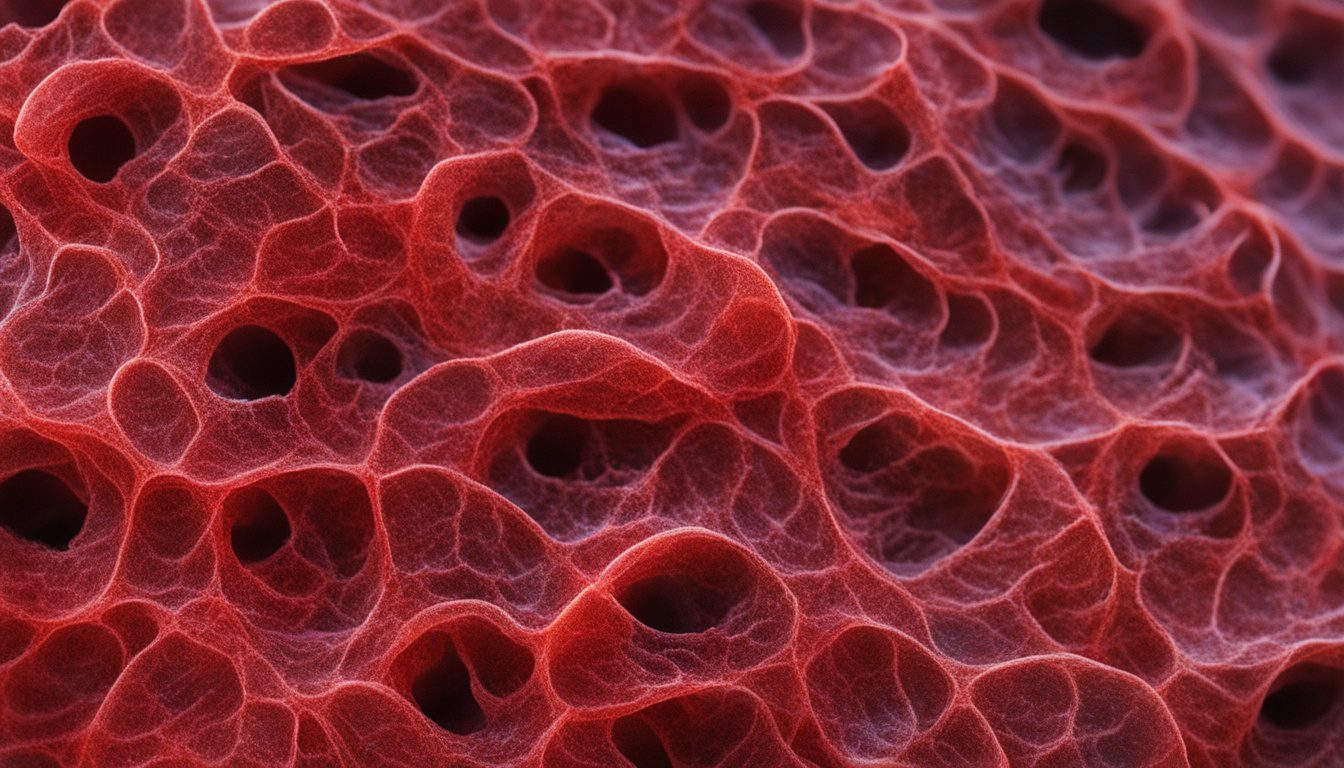Swimmer’s itch is an allergic reaction caused by water-loving parasites. It’s known as cercarial dermatitis. These parasites let out tiny larvae into the water. When these larvae come into contact with a swimmer, they can burrow into their skin. This causes itchy rashes. The condition leads to itching, burning, and the development of small red bumps or blisters.
The problem is more common in summer. That’s when people swim a lot. Doctors can spot swimmer’s itch by looking at the skin and asking about swimming. Unfortunately, there isn’t a specific cure. But, you can help with the itch using things like corticosteroid creams, baking soda, and cool oatmeal. Sometimes, antibiotics are needed for severe cases.
Right now, stem cell therapy isn’t used to treat swimmer’s itch.
Key Takeaways:
- Swimmer’s itch, also known as cercarial dermatitis, is caused by parasites that infect animals in water.
- Microscopic larvae released by these parasites can burrow into a swimmer’s skin, leading to itchy rashes.
- The symptoms of swimmer’s itch include burning, itching, and the formation of small red bumps or blisters.
- Swimmer’s itch is more common during the summer months when people spend more time swimming.
- Diagnosis is based on a physical examination and specific questions about recent swimming activities.
- Home remedies such as topical corticosteroid creams, baking soda powder, and cool oatmeal massages can help manage the symptoms.
- In severe cases, antibiotics may be necessary to treat bacterial skin infections.
Causes of Swimmer’s Itch
Swimmer’s itch comes from cercarial dermatitis, which is caused by waterborne avian schistosomes. These tiny creatures usually infect waterfowl and animals near water. The parasites’ eggs end up in the water through the feces of these animals. Once in the water, the eggs hatch into larvae, looking for a host.
A person can get swimmer’s itch by swimming in water with these larvae. The larvae can burrow into the skin, causing an itchy and uncomfortable reaction. Remember, the parasites can’t live in us, but they can cause an allergic response.
The Life Cycle of Avian Schistosomes
The lifecycle of avian schistosomes sheds light on how swimmer’s itch happens. Infected birds release egg into the water. Once these eggs hatch, the larvae, called cercariae, swim freely in the water.
These cercariae need to find a snail to live in. Inside the snail, they grow. Later, they leave the snail as larvae, still looking for a bird. If a human is in the water, they might mistake us for a bird, trying to penetrate our skin. This attempt is what causes the itch.
Remember, not all water has the right snails for these larvae. Swimmer’s itch is more common in certain places with lots of infected birds. The season, weather, and the number of hosts all play a part in how likely it is to get swimmer’s itch in an area.
The Role of Human Activity in Swimmer’s Itch
People can add to the spread of swimmer’s itch. If we swim in contaminated water or bother the living space of infected birds, we might get exposed to the parasite. Knowing how it spreads helps us prevent it. For example, it’s smart to avoid swimming in places where swimmer’s itch is known to be common.
Symptoms and Diagnosis of Swimmer’s Itch
Swimmer’s itch, known as cercarial dermatitis, happens after swimming. Its symptoms, like itching and small red bumps, kick in within hours. They can last for several days and make swimming less fun.
These symptoms might go away and then come back, making it hard for people. This stop-and-start can be irritating to those affected.
It’s key to know that swimmer’s itch differs from other skin problems. It’s caused by an allergic reaction to parasites in the water. Conditions like insect bites and bacterial infections may seem similar but don’t share the same cause.
Diagnosing swimmer’s itch includes asking about recent swims and a skin check. A doctor will look for its telltale symptoms on your skin. This helps them be sure it’s swimmer’s itch and not something else.
There isn’t a specific test for swimmer’s itch. Doctors decide based on what they see and by ruling out other conditions.
Conclusion
Swimmer’s itch, or cercarial dermatitis, makes people itchy and uncomfortable after swimming. This happens when parasites in the water get on your skin. The itching usually goes away by itself in about a week.
If the itch stays or you see signs of a skin infection, see a doctor. They might give you something to help with the itch. It’s also smart to avoid swimming in dirty water and dry off well after swimming.
Knowing about swimmer’s itch and being careful can help you have fun while being safe. Always think about your health and keep your skin protected when swimming in lakes or other places with potentially dirty water.

